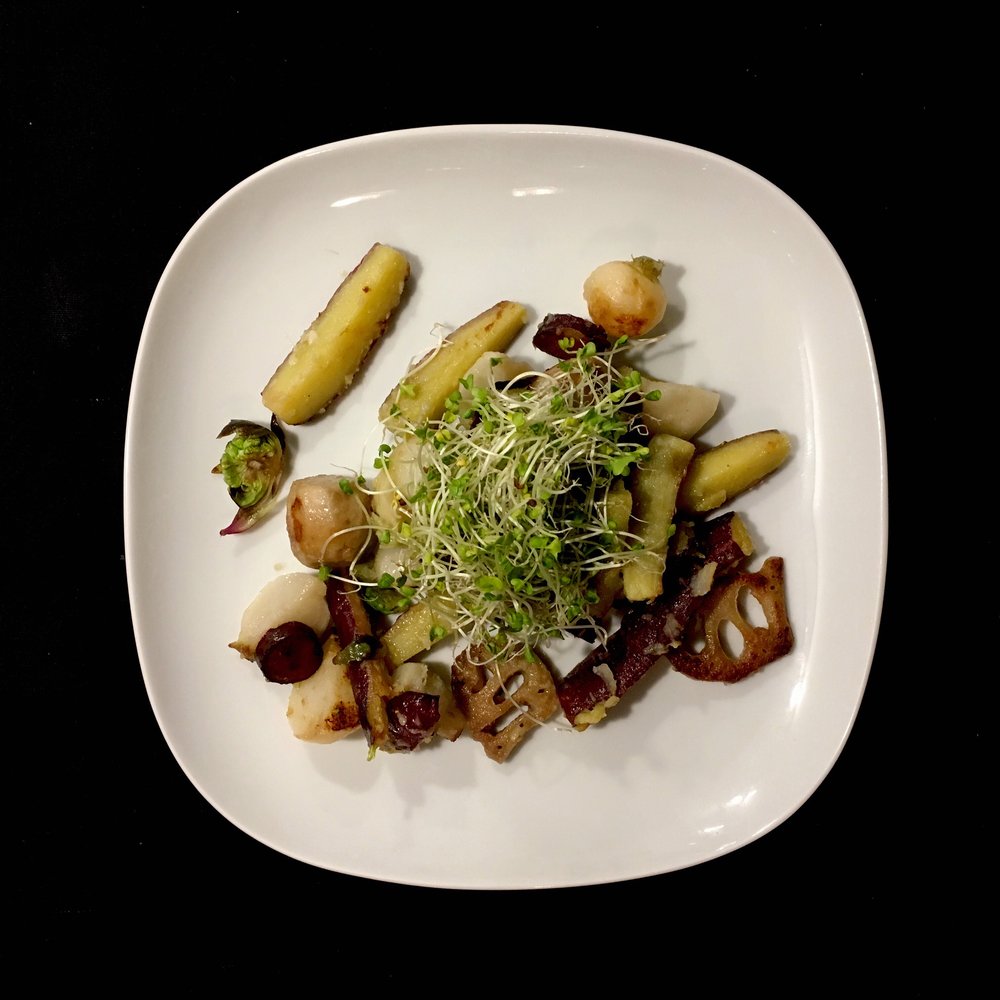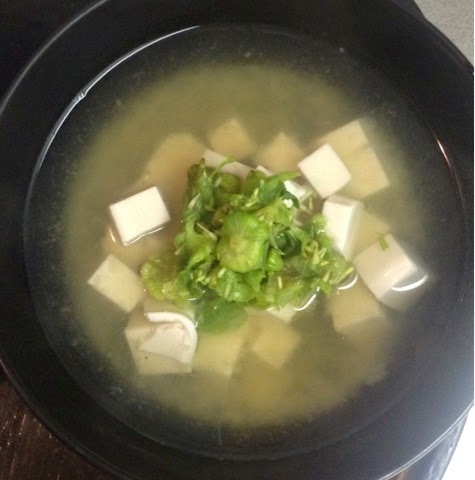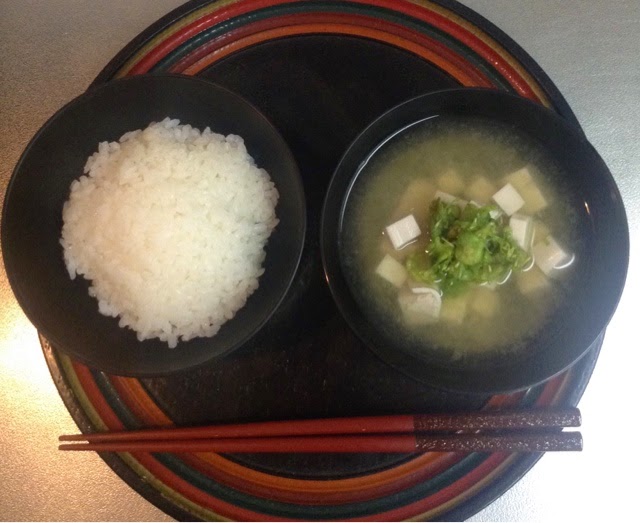

Quite a week, and it’s only Thursday!!! So let’s get back to when I left you last Saturday… Sunday evening we had 4 guests (mix of French and Japanese) for dinner at home in Tokyo so I cooked some of my half new recipes: creamy cauliflower soup with curried croutons (recipe below), pork cutlet with roasted roots: lotus, taro, sweet potatoes, turnips, deglazed in soya sauce, and for dessert hasaku with spices syrup (ginger, cinnamon and cardamom) served with sesame and kinako biscuits. A. picked many Japanese and French wines to accompany my food. Oh… and I also made some plain and olive fougasse, with the olives from the garden in Aix that my mother prepared! But that was Sunday and it seems ages already!!!


And then Monday it had snowed, quite a lot actually, so I came back home earlier than usual to avoid being stucked with train problems. And I was happy to work from home eating left over sesame-kinako cookies with a hot chaï late. And having nothing to prepare or so for dinner since I hade made too many roasted vegetables! I like to recycle leftovers and do new things with them. So I added fukinoto and topped with sprouts for a perfectly balanced dinner. It was a great flavor experience! Fukinoto bring so much!! They are also the taste of coming spring with plum blossoms! And then there was this workshop I co-organized at the French Embassy. Everything went great, I met amazing people, now I can think about what’s next (and there’s plenty) and go back to the work routine for a short while!!
How is your week doing?
Cauliflower soup with curried croutons (6 servings as starter)
– 1 cauliflower
– 1 potato
– 150ml of cream
– 4 slices of bread (I used half rye bread I made)
– 2tsp of curry
– oil for the frying the croutons
– salt, pepper
In a large pan I boil the cauliflower washed and chopped and the potato, peeled and chopped too. When they are very soft I blend everything. Add water if it’s too thick. Then add the cream.
In a fry pan add oil and the curry, cut the bread in cubes and fry them while turning them regularly. When golden take them out and keep them on cooking paper. When serving heat the soup, add salt and pepper if you lile, serve and top with the croutons. I added a sprinkle of tumeric for adding a bit of color.

 And just at this perfect moment (timing couldn’t be better), the doorbell rang and after a short time A. came back to the kitchen with a warm dish of bamboos shoot rice prepared by our neighbor who has been to the country to pick bamboo shoots. Isn’t that lovely! And here the perfect dinner was ready! Thanks a lot I. and Mrs W.!!!!!
And just at this perfect moment (timing couldn’t be better), the doorbell rang and after a short time A. came back to the kitchen with a warm dish of bamboos shoot rice prepared by our neighbor who has been to the country to pick bamboo shoots. Isn’t that lovely! And here the perfect dinner was ready! Thanks a lot I. and Mrs W.!!!!!








